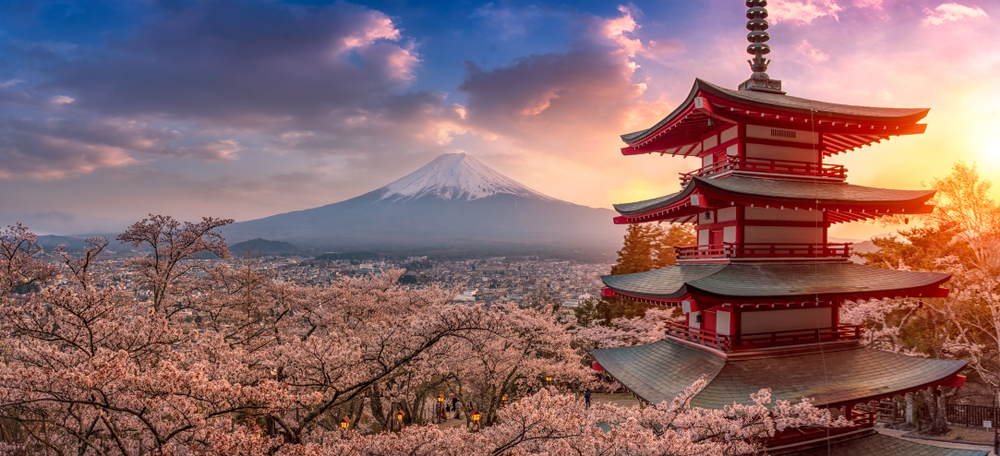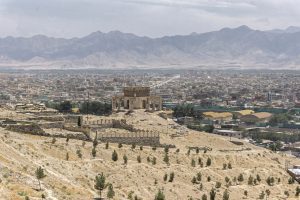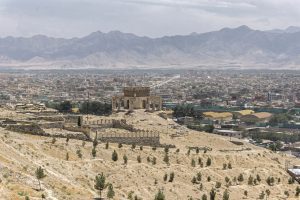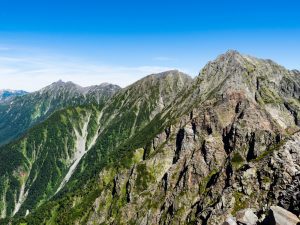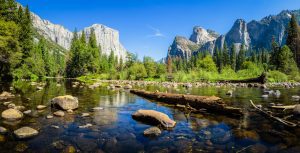Aside from the famous Mount Fuji, Japan isn’t exactly known for its mountains. Other Asian countries like Nepal and Afghanistan often get attention for their towering mountain peaks, but Japan is not to be overlooked.
This stunning island chain is the product of hundreds of millions of years’ worth of tectonic plate movement, and scientists estimate that up to 80% of this island nation is covered in mountains.
While Mount Fuji is by far the most glorious, the other tallest mountains in Japan definitely deserve some recognition too.
Below we’ve outlined the ten highest mountains in Japan, so keep reading to learn more about these lesser-known summits.
Table of Contents
1. Mount Fuji – 3,776 meters | 12,388 feet
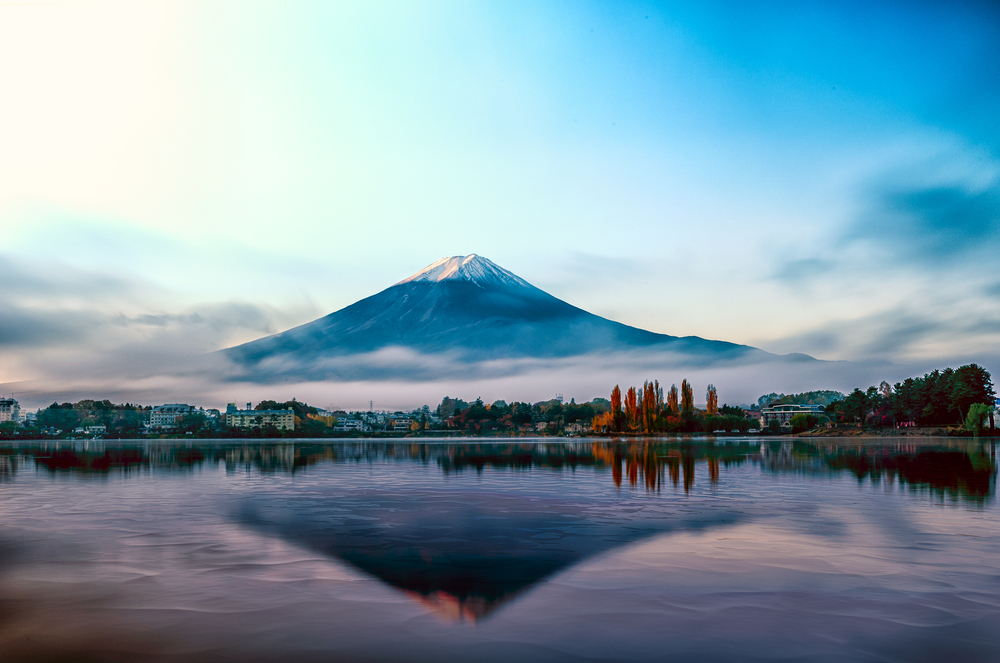
Mount Fuji is both the highest mountain in Japan and one of the country’s most iconic natural landmarks.
Lovingly called “Fuji-san” by locals, this massive mountain is situated along the border of the Shizuoka and Yamanashi prefectures about 100 kilometers (62 miles) southwest of Tokyo.
The best view of Mount Fuji is without a doubt from the shores of the lovely Yamanaka Lake, which is located in the Yamanashi prefecture.
On a clear day, it’s possible to see this snow-capped mountain all the way from the capital city.
This massive mountain is also an active volcano. That doesn’t stop people from ascending to its peak, however.
Mount Fuji is considered one of three sacred mountains in Japan, and each year people from around the world make their way to Japan for their chance to reach the summit.
Mount Fuji is as mysterious as it is iconic, and there are plenty of legends surrounding this towering mountain peak.
Some say that the snow at the top is the source of immortality, which may be why so many elderly people attempt this ascent each year.
It may also have something to do with the saying that you’re not truly Japanese until you climb Mount Fuji.
2. Mount Kita – 3,193 meters | 10,476 feet

Japan’s second-highest mountain is Kitadake or Mount Kita. Located just outside the city of Minami-Alps inside of the Minami Alps National Park, Mount Kita is also known as “the Leader of the Southern Alps”.
While it may not be the absolute tallest mountain in Japan, it is the highest peak that isn’t a volcano.
Its location inside of the Yamanashi prefecture means that the lush flora and variety of fauna that live on the mountainside are extremely diverse.
Mount Kita is much less known than Mount Fuji, and that means that there are fewer crowds jockeying for a spot at the summit.
It’s also a fairly easy climb even for those who are inexperienced with mountaineering, and it’s really more like a hike (albeit a difficult one).
3. Mount Hotaka – 3,190 meters | 10,470 feet
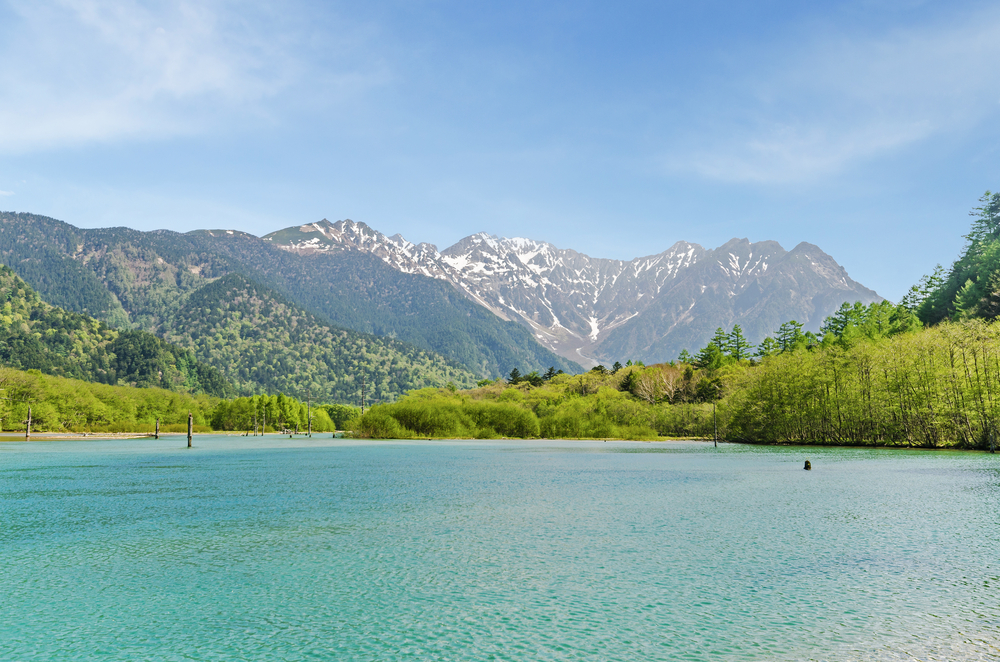
Straddling the border of the Nagano and the Gifu prefectures, Mount Hotaka is the third-highest mountain in Japan.
Also referred to as Oku-Hotaka, this famous peak is surrounded by some seriously stunning scenery.
Those who seek out this soaring mountain peak will be dazzled by the 50 shades of green that surround it in the forests, rivers, and valleys.
Although it is just a few meters shorter than Kitadake, reaching the summit of Mount Okuhotaka is leaps and bounds more difficult.
The terrain is extremely rocky, and while there is a trail leading to the top of this mountain, only the most experienced climber should attempt to reach the summit.
4. Mount Aino – 3,189 meters | 10,463 feet

Head back to the Minami Alps National Park to find Japan’s fourth-tallest peak. Mount Aino stands tall along the Yamanashi and Shizuoka prefectures and boasts a massive peak that is so wide you can actually get lost.
Those who take the trail to the summit will find plenty of room to relax and enjoy the scenery, which includes epic views of Mount Fuji on a clear day.
5. Mount Yari – 3,180 meters | 10,433 feet
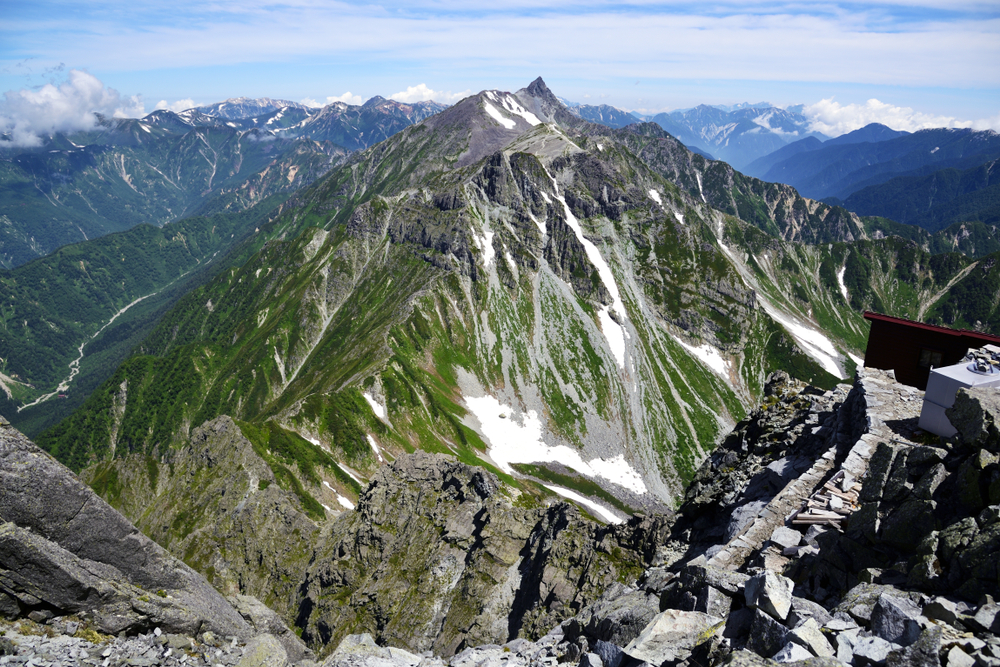
Tucked along the border of Japan’s Shizuoka and Gifu prefectures, Mount Yari is the country’s fifth-highest peak.
As part of the Hida Mountains (or the Northern Alps), Mount Yari is also known as the Matterhorn of Japan due to its pyramidal shape.
Yari actually translates to “spear” in Japanese, and once you see the summit the name makes sense.
Mount Yari is located in the Chubu-Sangaku National Park, and during the summer months, this peak is extremely popular with mountain climbers.
There are several different routes up to the top of the mountain, along with a variety of mountain huts in the nearby vicinity.
6. Mount Warusawa – 3,141 meters | 10,305 feet
Tucked into the “Southern Alps” of the Shizuoka Prefecture, Mount Warusawa is the sixth-highest mountain in Japan.
This mountain goes by many names, including Warusawa-daki, Higashi-daki, and Azuma-daki.
This tall peak is located inside the Minami Alps National Park and is a part of the Arakawa Three mountains.
Mount Warusawa is the highest of the three and sits to the east. The other two mountains of the Arakawa Three include Mount Arakawa-Naka (located at the center) and Mount Arakawa-Mae (located to the north).
When it comes to climbing Mount Warusawa, most adventurers attempt to ascend all of the Arakawa Three mountains.
7. Mount Akaishi – 3,120 meters | 10,236 feet
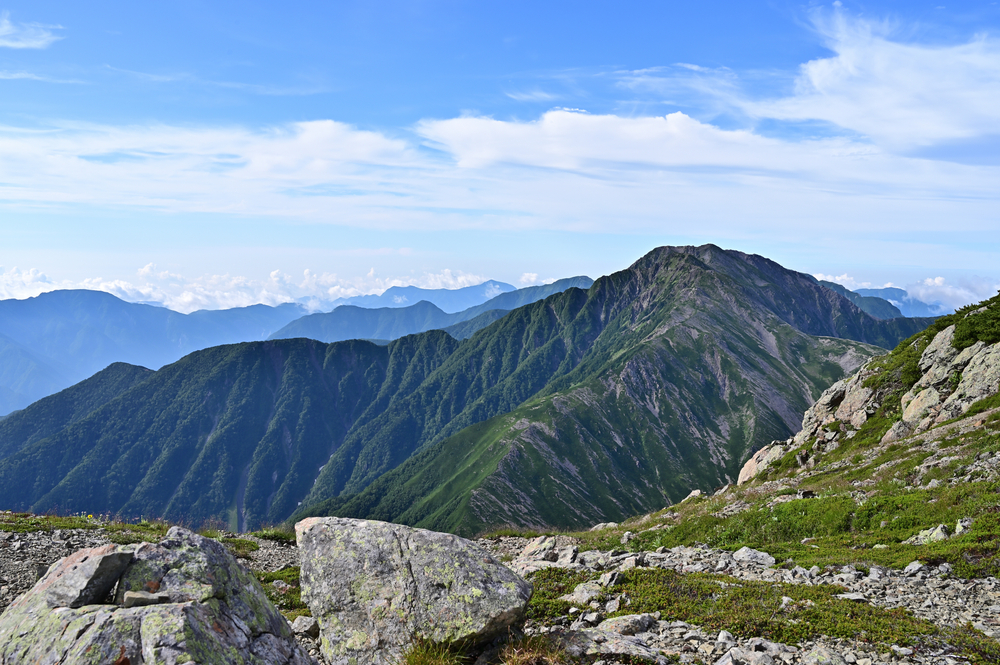
Mount Akaishi is Japan’s seventh-highest mountain. Like so many of the country’s other tallest peaks, Mount Akaishi sits within the Minami Alps National Park.
The mountain lies on the border of the Shizuoka and Nagano prefectures and is the fourth-highest peak in the Akaishi mountain range.
The first ascent of Mount Akaishi occurred back in 1879. Shortly after the first ascent, a road to the base of the mountain was constructed and Mount Akaishi has been climbed countless times since.
One of the ascents of this towering peak sticks out among the rest, however. In 1926, an 88-year-old reached the top of Mount Akaishi with the help of a palanquin and 200 porters!
8. Mount Karasawa – 3,110 meters | 10,203 feet

Mount Karasawa is the eighth-highest peak in Japan. Situated in the country’s “Northern Alps,” this peak is actually part of the aforementioned Mount Hotaka.
The exact location of Mount Karasawa can be found on a steep ridge between Mount Kitahotaka and the Shirade Col.
This is one of the easier peaks to ascend in the region, and it is also home to the Hotakadake mountain cottage.
9. Mount Kitahotaka – 3,106 meters | 10,190 feet
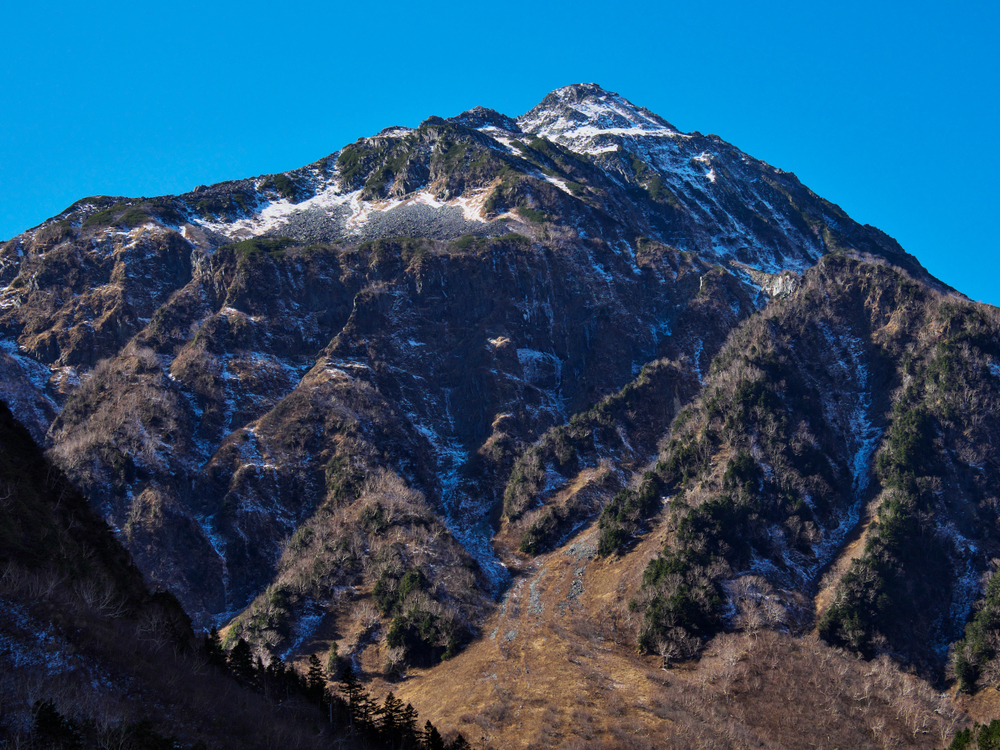
Just like Mount Karasawa, Mount Kitahotaka is part of the larger Mount Hotaka. It is the second-highest peak of Hotaka and the ninth-highest peak in Japan.
Mount Kitahotaka is located on the northern end of the range. The west side of the peak is home to one of Japan’s most famous rocky outcrops – Takidani.
There is also a mountain cottage located near Kitahotaka’s summit.
10. Mount Obami – 3,101 meters | 10,174 feet
Mount Obami is Japan’s tenth-highest peak. Situated along the border of the Nagano and Gifu Prefectures in the Southern Hida mountain range, Mount Obami is one of the lesser-known peaks in the country.
This could be partly due to the fact that it is overshadowed by the nearby Mount Yari, which is incredibly popular amongst climbers.
Those who visit the Chubu-Sangaku National Park will be treated to some great views of Mount Obami, even if they choose to stay at the base rather than attempting to climb all the way to its summit.

